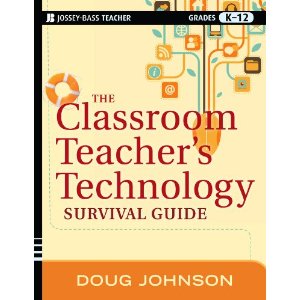BFTP: Big C and little c creativity
 Friday, May 17, 2019 at 06:42AM
Friday, May 17, 2019 at 06:42AM Csikszentmihalyi differentiates between big-C creativity and little-c creativity. The big-C creative person is eminent, a person whose work is well known by people in a particular field. The little-c creative person is not. Big-C creativity leads to the transformation of a domain. Little-c creativity is used in everyday life, as in problem solving. Jane Plirto Duke TIP
Why do so many teachers think that creativity belongs only in the art room? Why do so many parents simply write creativity off as frosting on the high brow cultural cake? Why do so many of us feel intimidated when asked if we ourselves are "creative"?
 It's because we don't differentiate between Big C and small c creativity.
It's because we don't differentiate between Big C and small c creativity.
Psychology professor and popular author Mihaly Csikszentmihalyi divides creativity into two types: big and little1. Big C creativity is that which most of us think of when we think of creative people: those who break the norms of art like Picasso, Presley, or Tharp. Those innovative scientists like Galileo, Edison, or Einstein. Those who invent new technology models like Ford, Bezos, and Jobs. It's those folks who influence what Csikszentmihalyi calls an entire "domain."
But Csikszentmihalyi also recognizes the small c of creativity - the everyday, often personal, problem-solving all of us do. We are all of us small c creative when we find that we're missing an ingredient in a recipe and need to substitute. When two of our children need to be at different places at the same time. When the lesson we planned can't be taught because the Internet is down. When we need to write something romantic in the Valentine's Day card to our sweetie.
We improvise.
We monitor and adjust.
We MacGyver.
I think of this as "duct tape ingenuity."
As much as I admire the Spielbergs, the Warhols, and the Beethovens of this world, I appreciate the really good small c creative people with whom I work everyday even more. The problem-solvers. The initiators. The teachers who do something a little crazy hoping the crazy thing may just capture the attention of some kids who weren't paying attention before. The tech who devises an ingenious work-around. The librarian whose library policies treat library users as people.
We need to honor small c creativity in our schools and classrooms - and we should be demanding our students demonstrate small c creativity instead of relying on adults to routinely provide the solutions - to personal issues, of course (I forgot my iPad at home) but to classroom issues as well.
Shouldn't we be asking our students for solutions for these sorts of problems?
- We have only 20 books for 26 kids in the classroom.
- When school dismisses early on snow days, some kids' parents can't come to get them until regular dismissal time.
- Jerry and Tom are always arguing.
- Alisha is getting cyberbullied.
- The chapter on the civil rights movement in the textbook is boring.
- The librarian only lets kids check out two books at a time.
- The wireless network is slow.
- Our newest student doesn't speak English as her native language.
Teachers should recognize that not all forms of creativity are demonstrated through big projects with formal assessments for a grade. Thinking of creative solutions to a problem is a habit of mind, a disposition, a personality trait - an integral part of personal responsibility.
That only gets stronger with practice.

1. Csikszentmihalyi, Mihaly. Creativity: Flow and the Psychology of Discovery and Invention. Harper, 1997.









Reader Comments